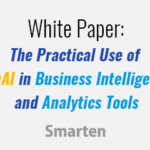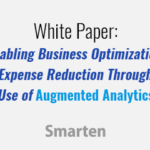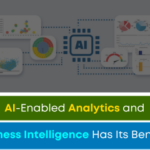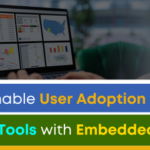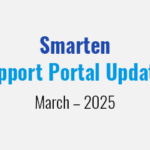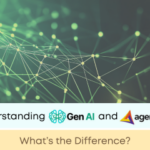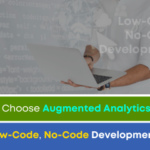
To be successful in business, every organization must find a way to accurately forecast and predict the future of its market, and its internal operations, and better understand the buying behavior of its customers and prospects. With the democratization of business intelligence and the advent of self-serve business intelligence tools, organizations hope to encourage and create Citizen Data Scientists and enable the average business user to leverage sophisticated predictive algorithms and BI tools without the expertise and skill of a trained data scientist. This approach allows users who are not statisticians, data scientists, programmers or analysts to leverage self-service tools to confidently make business decisions, share data, and reports and present data in a way that allows the organization to identify trends, patterns, opportunities and challenges.
What could be wrong with that?
Well, some organizations and managers believe that the birth of Citizen Data Scientists means the death of real Data Scientists, and that belief often causes resistance to the democratization of business intelligence and discourages support for the Citizen Data Scientist approach.
Or
Perhaps the enterprise fears that citizen data scientists will derive the wrong conclusions or meaning from the data, and make a decision that will harm the business.
The transformation of business users into Citizen Data Scientists does not (and should not) strike a death knell for professional data scientists or in-depth analytical techniques. In order to truly understand and appreciate the Citizen Data Scientist approach one must consider how data is used within the organization.
For example, a business user might leverage Plug n’ Play Predictive analysis – Assisted Predictive Modeling, to analyze customer churn and find out which customers are likely to move away (churn) based on purchase patterns, demographics, geographic and other macro parameters. They can analyze customer acquisition and find out how a prospect or set of prospects can be converted to customers. They can recommend cross-sales opportunities and product promotions, and identify and recommend the best location for a warehouse, store or branch. In short, there is a lot a business user can do with deep dive analysis, plug n’ play predictive analysis, self-serve data preparation and smart data visualization.
These types of self-serve business intelligence tasks and activities assure swift, accurate data preparation and analysis and clear, concise decisions.
This approach also allows the organization to properly leverage IT resources, analysts and data scientists and dedicate these professional resources to the real meat of analytics and sophisticated, complex projects.
Think of the Citizen Data Scientist as the Physician’s Assistant (PA) and the Data Scientist as the Physician. The Physician’s Assistant is able to perform many assessments and make recommendations to relieve the Physician from these tasks. But, when there is a need for a more complex assessment or recommendation, an opinion based on specific training and knowledge, or a need to further refine a PA’s decision, the Physician will consult and refine results, analysis, and recommendations.
If the organization needs to fine-tune or further explore an issue, a parameter, or a model, the Data Scientist is the ‘go to’ person. If there is a need for precision calculation, a unique algorithm application, analysis of selection bias, theory-driven methodology or other in-depth analysis, the organization would look to a data scientist.
If a citizen data scientist performs a hypothesis and prototype, the organization will benefit by the agility and timeliness of decisions so, while the business user cannot replace a data scientist, they can help the organization by bringing their domain expertise and the knowledge inherent in their role to the discussion they have with a data scientist. In so doing, the data scientist can review the results of the hypotheses and prototype and fine-tune the results to provide more comprehensive, more exacting data to the organization.
There are many situations and instances where a finite calculation or a detailed, comprehensive analytical approach is unnecessary and in this case, the time and effort expended by a Data Scientist would be considered overkill. However, that is not an excuse for sloppy, inaccurate analysis, nor does it forgive inappropriate conclusions drawn and developed by bad tools or resulting from lack of access to good business intelligence solutions and self-serve data analysis and formatting.
The fact is that in every enterprise, there is a place and a time for Citizen Data Scientists and a place and time for trained Data Scientists.
One need not look at this issue as a choice between the two. Rather, your organization should consider the benefits inherent in both and develop policies and procedures that allow business users to leverage these self-serve tools and to access and involve data scientists as appropriate to the analytical task. In the meantime, by providing these tools to your business users on a daily basis, your organization will benefit from a more cost-effective, quicker, more accurate use and analysis of data and you will optimize your team and resources.
Original Post: Do Citizen Data Scientists Mark the Death of Data Scientists?



